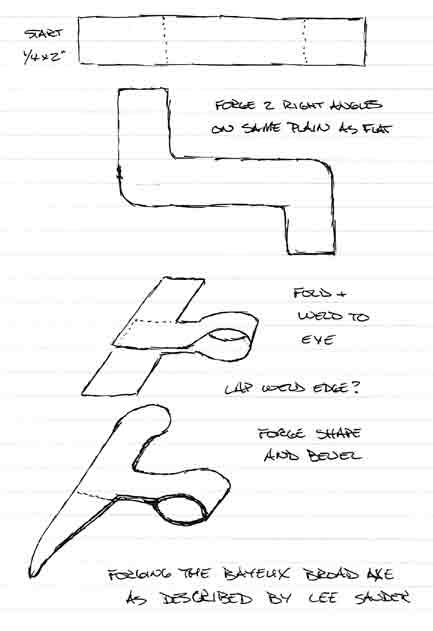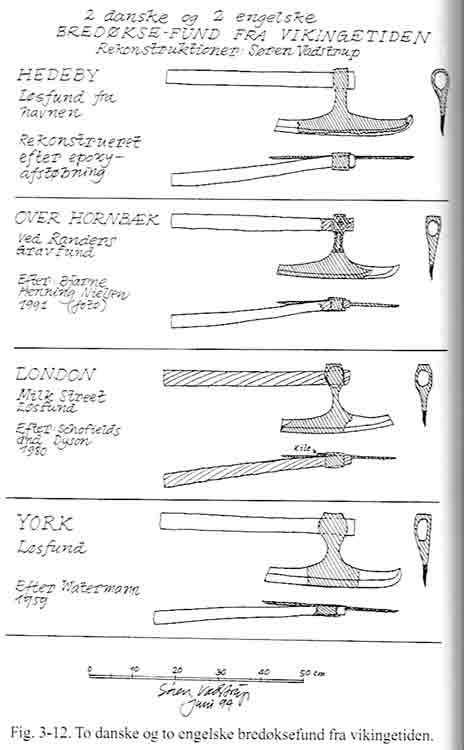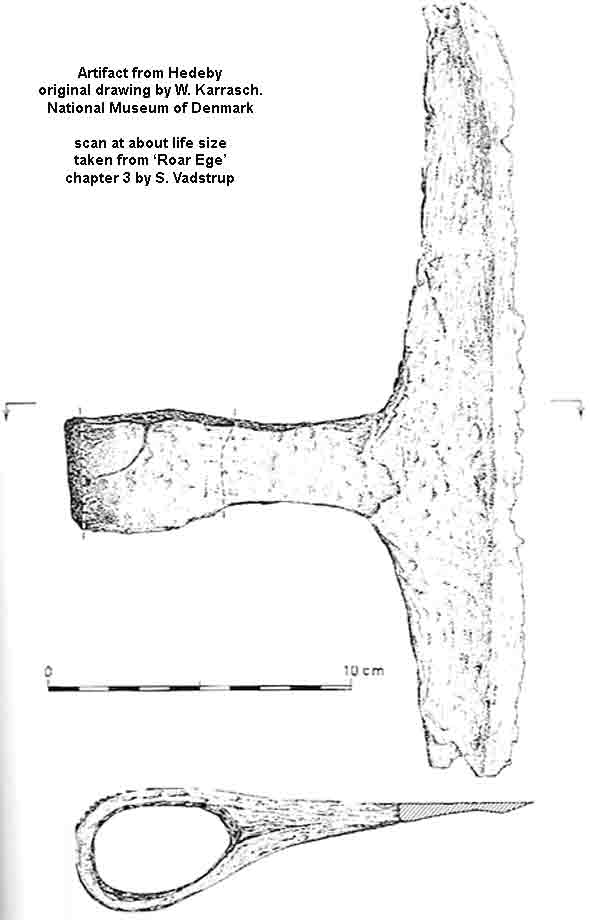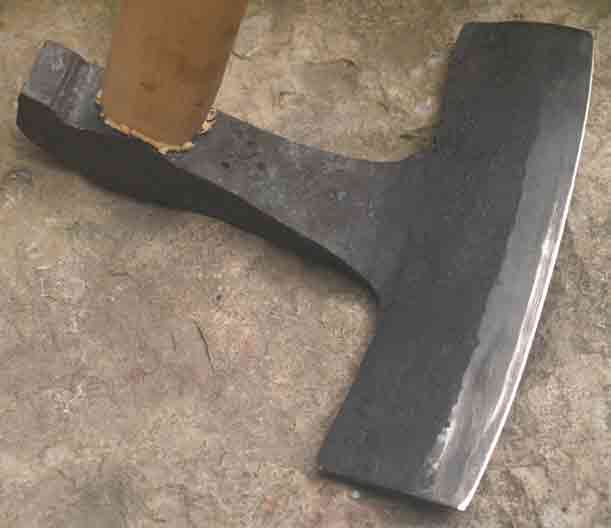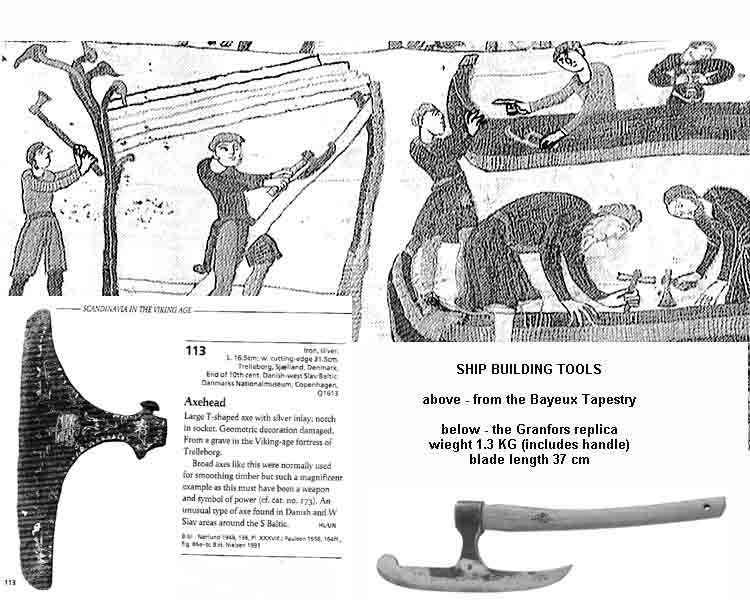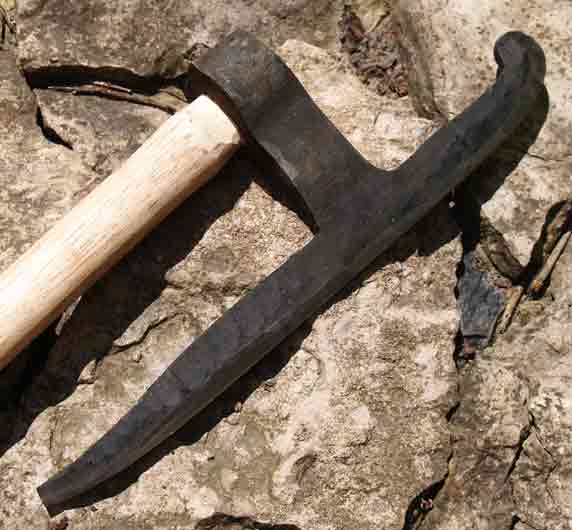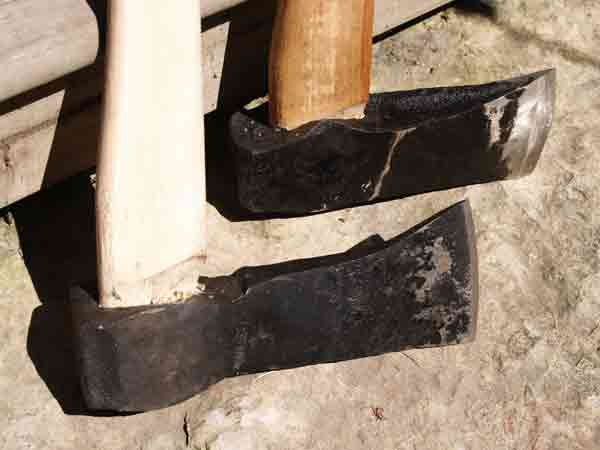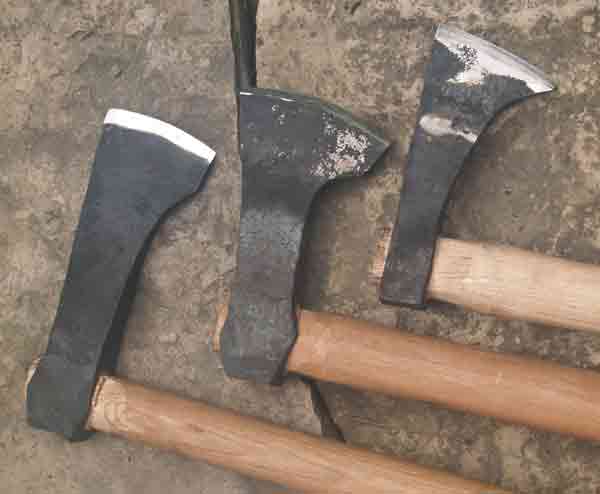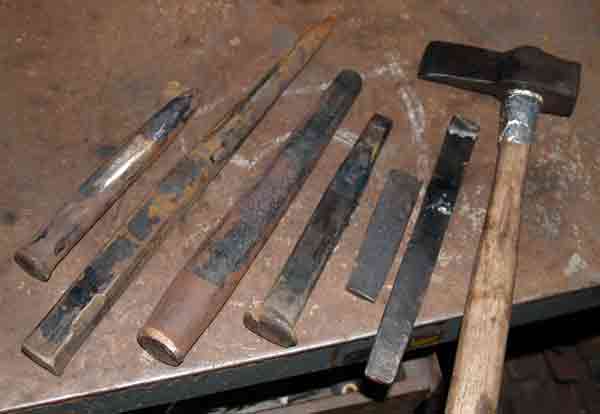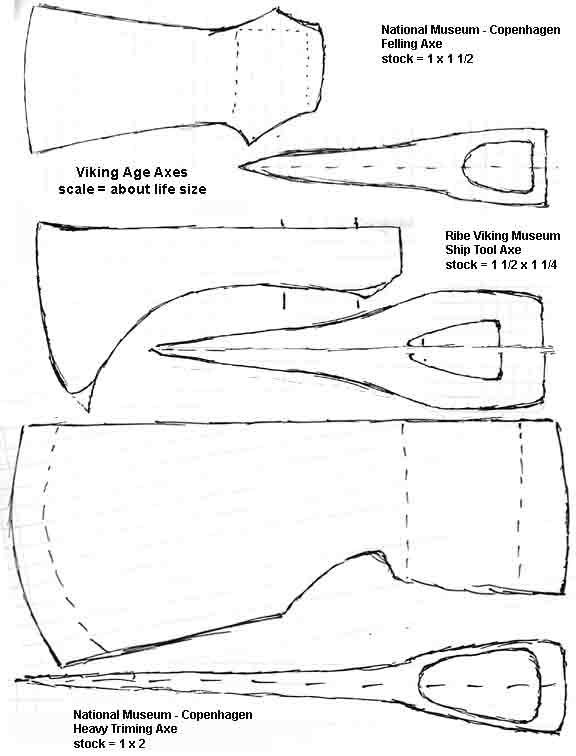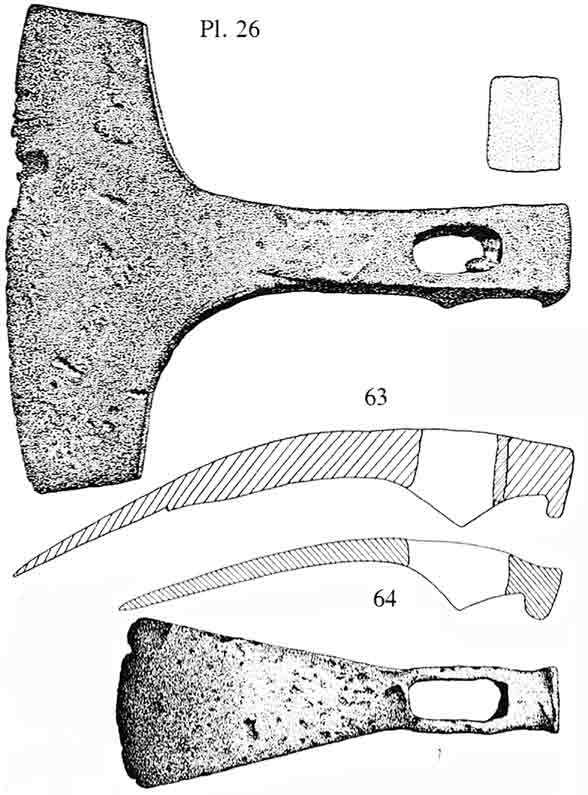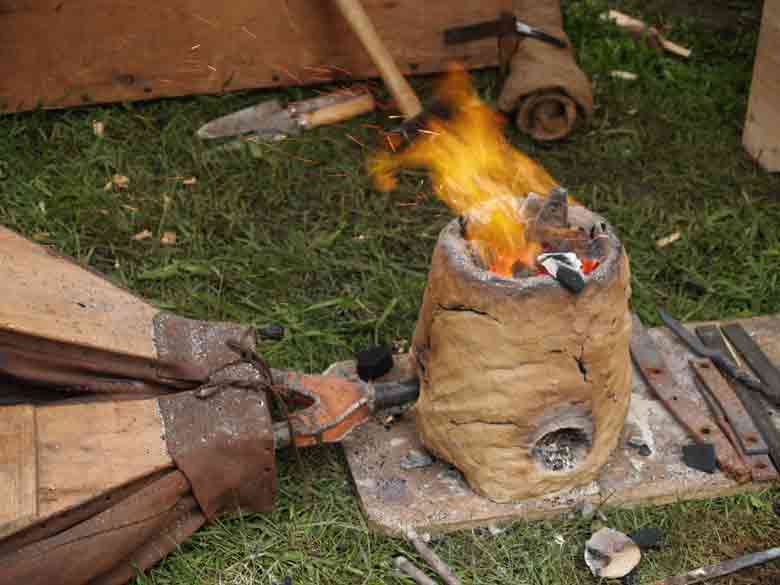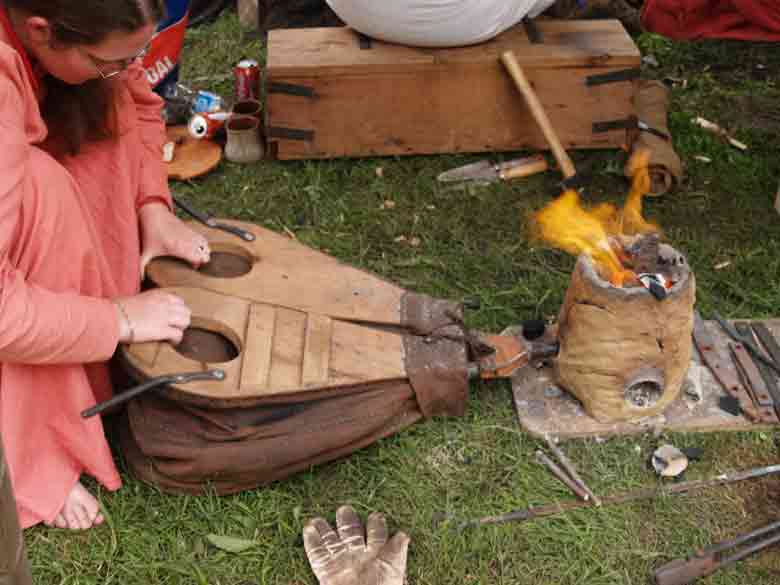I was prodded to write this summary after Sunday's edition of 'Cross Country Check Up' on our CBC radio. The topic was the current discussion in this country of Carbon Tax. As someone who requires burning fuel for the working process, I thought I would try to get some idea just what my consumption means. I have always been concerned for human impact on the natural world, while reserving my place inside it.
First thing you will find if you attempt this - the units of measurement underlaying these discussions are inconsistent, obscure, non-sensical, or just plain wrong. It makes any rational application of numbers to understanding almost impossible. What I expected to be a fast 10 minute search has so far turned into 2 hours of shifting through conflicting information (and plain garbage).
As a blacksmith, you have three workable options for fuel in the forge: Coal, propane, or charcoal. I am considering metallurgical coke as a derivative of coal (mostly) and other gases (natural gas or methane) as derivative of propane. For the purposes of this overview, all tree species are grouped together for charcoal.
I (fortunately) have an old article from ABANA's 'Anvils Ring', 'Some Comparisons of Coal, Coke and Propane Forges' by Dick Blomberg (volume 18, number 2, Fall 1990). Believe it or not, while many people quack on and on about the comparisons of coal and propane fuels, hard numbers are almost impossible to find:
Fuel ** Density ** Heat Value ** Top Temperature
** lbs / cubic ft ** BTU / lb ** F
Bituminous Coal ** 50 ** 14,550 ** 3550
Metallurgical Coke ** 30 ** 14,000 ** 3550
Propane ** 45 ** 21,560 ** 3600
Charcoal ** 13 ** 14,500
Note that these numbers include averages and calculated amounts.
(If anyone knows how to get a chart or table to work properly on Blogger - let me know!)The peak flame temperature is an absolute that does not take into account the effectiveness of a given forge construction. The actual working temperature is not going to reach this peak. The important thing is that ALL these fuels inside the correct forge should give welding temperatures (about 2000 - 2100 F)
So what I get from this is the following:
To get the same heat energy into the forge, I can consume :
Propane 20 lbs @ $ 15
Coal 30 lbs @ $ 9
Coke 31 lbs @ $ 23
Charcoal 30 lbs @ $ 30
I have set this up using a standard 20 lb propane tank as the base measure.
Now this does not take account in any way of the relative efficiency of the individual forge systems. It is true that a propane forge does not have a starting coking cycle, and typically does not take as long to come up to proper working temperature. Against this is the sad truth that a gas forge is always running at full blast, consuming fuel whether metal is being heated or not. In my own experience, I certainly consume at least double the weight of fuel as propane as I would for the same working period if I was using the coal forge. With a coal forge, fuel is basically only consumed when the air blast is applied - so only when metal is being heated. Over a work period there is normally considerable variation in temperature as controlled by air volume, thus differing burning rates.
The prices quoted are for rough current prices (July 1, 2008) around Central Ontario (in Canadian Dollars). They do not take into account related transport costs or taxes.
If you are in the eastern half of North America, most likely your smithing coal is coming from the 'Pocahontas 3' source. This accounts for something like 75% of the bituminous coal mined in this part of the continent. The component numbers for any individual shipment can vary, so this represents an average:
Carbon 92 %
Sulphur .7 %
Ash 7.5 %
Moisture 1.8 %
Volatiles 18 %
I know that does not add up to 100 % - but blame inconsistent samples (data from a university web site that I can no longer find!) The Volatiles will include things like the trapped water, most importantly the methane. I mention this because although these gases are driven off in the 'coking' phase of a normal blacksmith's fire, they would not contribute to the BTU numbers above.
They do however count for the total carbon foot print.
Methane is listed as '21 times worse' in terms as is effect as a greenhouse gas. I mention this primarily related to natural gas. Natural gas is roughly 80% methane. (Note that the peak flame temperature of methane is only 2300 F)
Now we have to switch gears and units a bit. I wanted to keep to pounds for the first segment, as both coal and propane are sold in those units.
Now Carbon Footprint numbers are based around CO2 - and typically quoted in metric numbers. Metric tonne is the standard unit (1000 kg). So I have had to play some games to get the numbers in line with our measurements above:
Coal 30 lbs = 74 lbs CO2
Propane 20 lbs = 88 lbs CO2
Remember our cost differences - plus the considerably larger raw consumption of propane per working hour (at least in my gas forges here). Ecologically (as well as financially)
it is clear that using coal is actually BETTER than operations using propane.
Now bear in mind that on a normal operation year here at the Wareham Forge, I will consume about 1000 - 1200 lbs of coal. I do use a quantity of propane as well, but can't give a hard number, but its certainly no more than 480 lbs (thats one 40 lb fill per month). I get a total carbon footprint of:
Coal 0.5 tonnes = 1.3 tonnes CO2
Propane 370 litres = .6 tonnes CO2
That puts the forge operations at the Wareham Forge at a total carbon load of roughly 1.9 tonnes of CO2.
A general set of tables on energy from various fuel types / Wisconsin Energy Education Program :
HEREA carbon footprint (C02) calculator (which lets you put in volumes of various fuels as well as activities to get total amounts produced) :
www.carbonfootprint.com/calculator.aspxJust for comparison, I ran the calculations on my driving. I recently kept the numbers for a medium distance trip with my 1992 Chev Astro fully loaded. I got something like 8.5 km to the litre (!!) Last year I recorded a total of about 15,000 km. This gives me a carbon load from gasoline alone at 4.1 tonnes.

